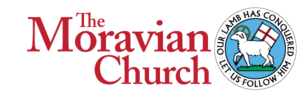
Delegates to the electoral synod and other interested members of the diocese joined in one of two days of reflection and prayer last week. Just under 70 active and retired clergy met by Zoom on Thursday, May 13, and around 90 members of the laity met Saturday, May 15. The two days followed the same pattern and included the same content.
The Rev. Madeleine Urion, rector of St. George’s by the U of A, led in responsive prayer to begin each day. On Thursday, the Rev. Tim Chesterton shared his talents on guitar to lead a hymn as participants sang safely on the other side of their computer screens in their own homes. On Saturday, Aaron Parker led the songs, bringing his musical gifts to the gathering.
After worship on both days, participants settled in to watch a video presentation by the Rev. Canon Dr. Scott Sharman, Canon Theologian for the diocese. Following the theme ‘Walking and Talking on the Way,’ Sharman began with a question that is asked as part of the service to consecrate a bishop: “Will you uphold N as bishop?” (Book of Alternative Services, page 635)
In the liturgy, this question is asked of the congregation, so Sharman asked participants to consider its implications for them and for all members of the diocese. How will we uphold the new bishop? How will we minister in partnership with that person?
“This formation day is not about bishops per se,” Sharman said, “or even about how to elect a bishop, but about the wider environment into which bishops fit, namely the synod, and that is all of us.”
Sharman encouraged participants to consider how each one personally will take part in the next episcopal ministry. “What we’re attempting to do (in these gatherings) is some intentional formation of our hearts and minds in preparation for the discernment we are being called to exercise to elect the 11th bishop of Edmonton. But we need to look inward as well and to think about the part each one of us will play.
“The bishop is not going to be the bishop all on their own. It’s a job that’s too big for one alone. It is a ministry that is meant to be upheld together.”
Sharman then unpacked the difference between ‘episcopacy’ and ‘episcope.’ The former describes the structure implemented by any church that has a bishop. It refers to an office. The latter more broadly refers to the work carried out within the diocese as part of that episcopacy. It is an action and, Sharman stressed again, it is shared by all.
Following the video, small groups of about four or five people met in Zoom break-out rooms to discuss three questions:
- How does a bishop best encourage and enable the order of the laity and the orders of the clergy to have their full voices and roles expressed in shaping the vision, decision making, and leadership of the diocese?
- In what ways do you feel you are personally being called upon to uphold the episcope of the 11th bishop of Edmonton? What do you need to be doing now to prepare for the part you will have in episcope?
- What are some other features of this time and place that you hope our church and the 11th bishop of Edmonton would be adaptive to?
After a break for lunch, participants watched a second video in which Sharman shared six visions of leadership based on six characters from the New Testament: Peter, John, Mary the mother of Jesus, Mary Magdalene, Paul and Stephen.
Again, participants broke into small groups to ponder three questions:
- Which of the descriptions of personified types of ministry resonated most deeply with your own sense of vocation and gifts? Do you see these shapes of ministry expressed in other colleagues and people in our local diocesan church?
- Of the six types that were given, what kind of bishop do you think would be most needed in our local church at this time?
- What kinds of roles and structures do you see as already existing in our diocese which point to a sharing in the bishop’s ministry of episcope? In what ways have these been working well, and in what ways would you like to see them refreshed or further enhanced?
Each of the two formation days finished with another song and closing prayer. Sharman says the two days went as well as possible considering three hours on Zoom cannot replace the benefits of gathering in person.
“The prayers were moving and inspirational,” he said. “The talks provided ideas and information to chew on that will be helpful as synod delegates reflect on and discern the needs and gifts of the diocese as we prepare to be joined by new leadership, and the breakout sessions gave people a good opportunity to express their own concerns and hopes for our church.
"Overall, I think the most common sentiment was that people really appreciated the chance to be involved and to feel more prepared for the important process we are undertaking together.”
Anyone in the diocese who was not able to attend one of these formation days is welcome to view the videos and work through the questions, either individually or with others. The videos are available on the diocesan website, as well as up-to-date information about the process for electing the 11th bishop of Edmonton.





